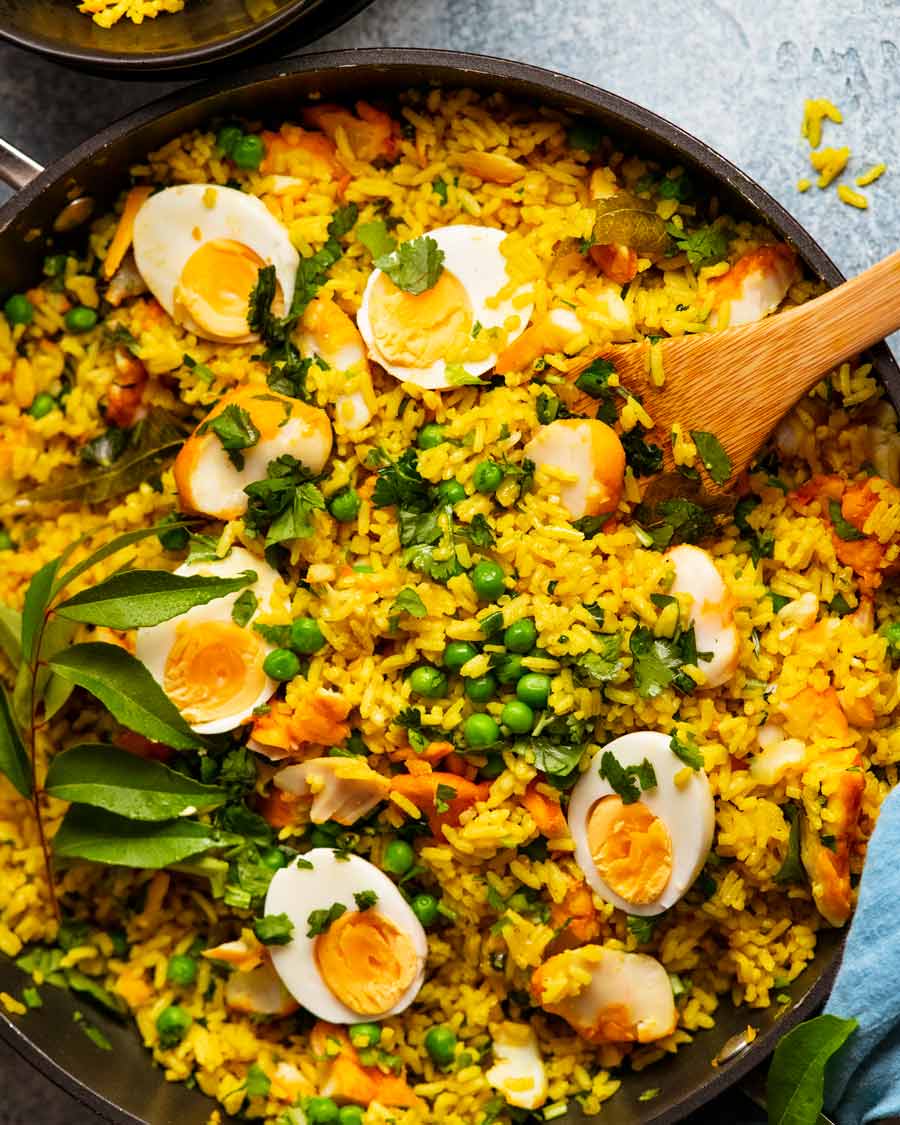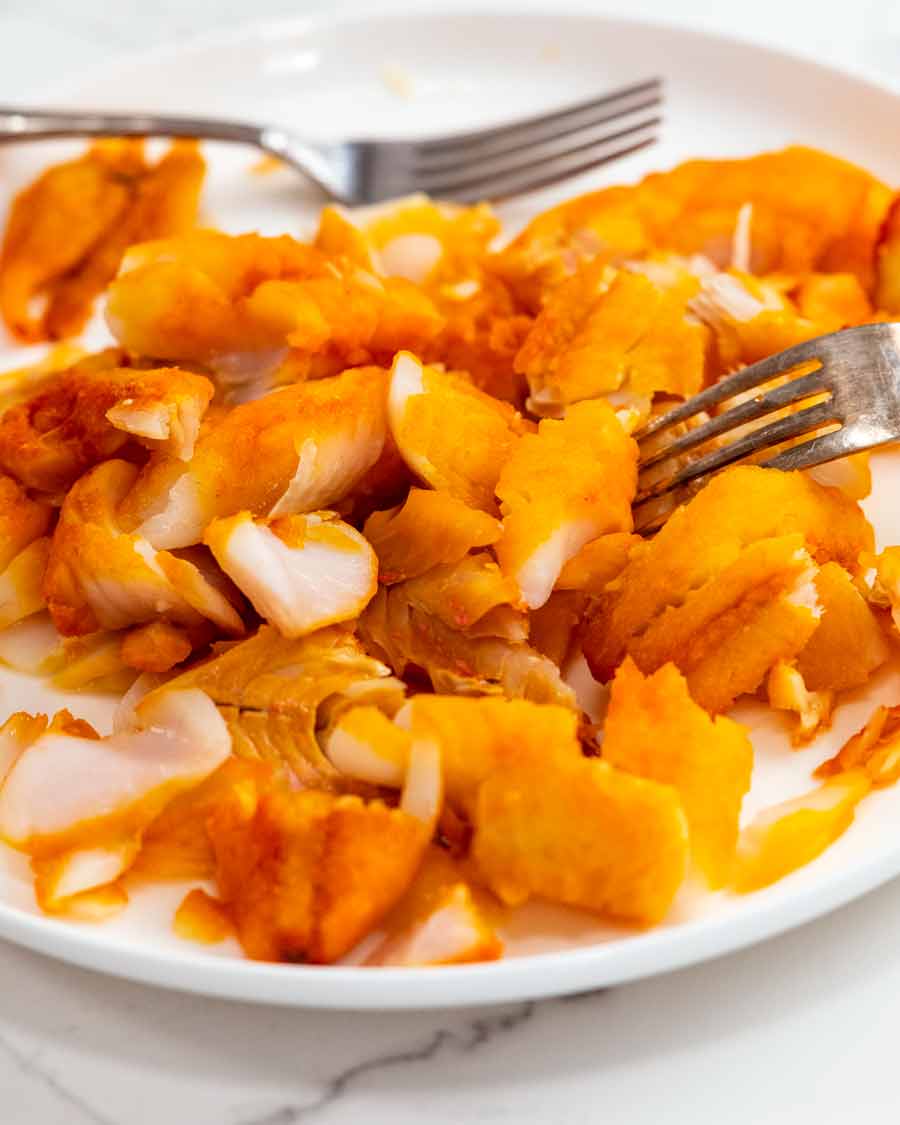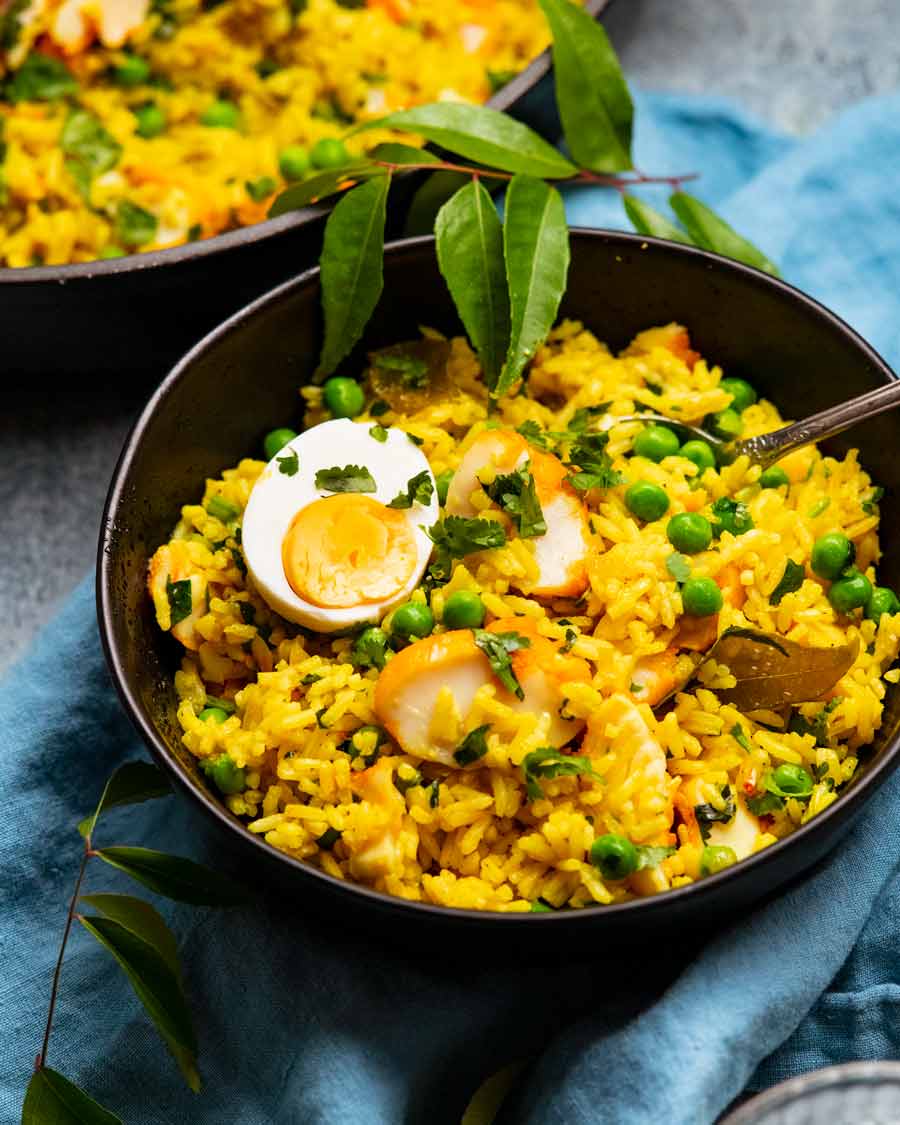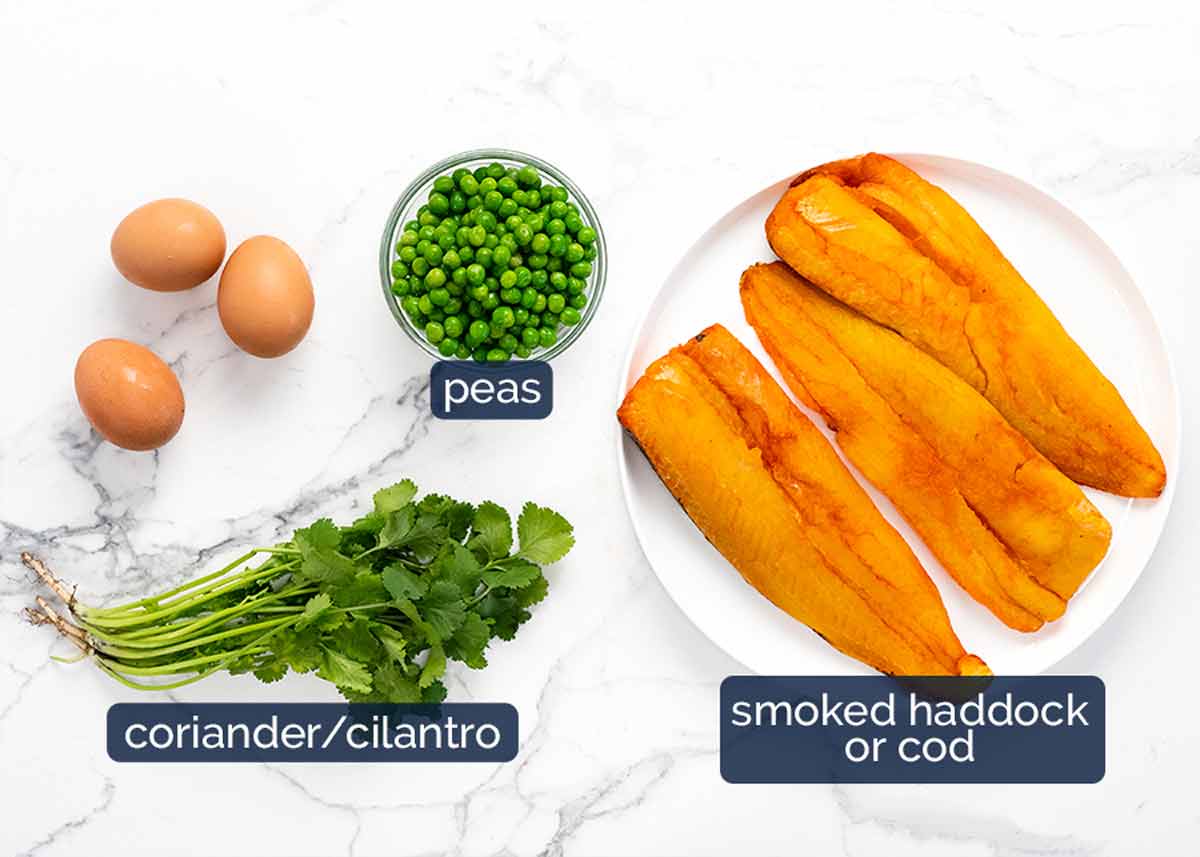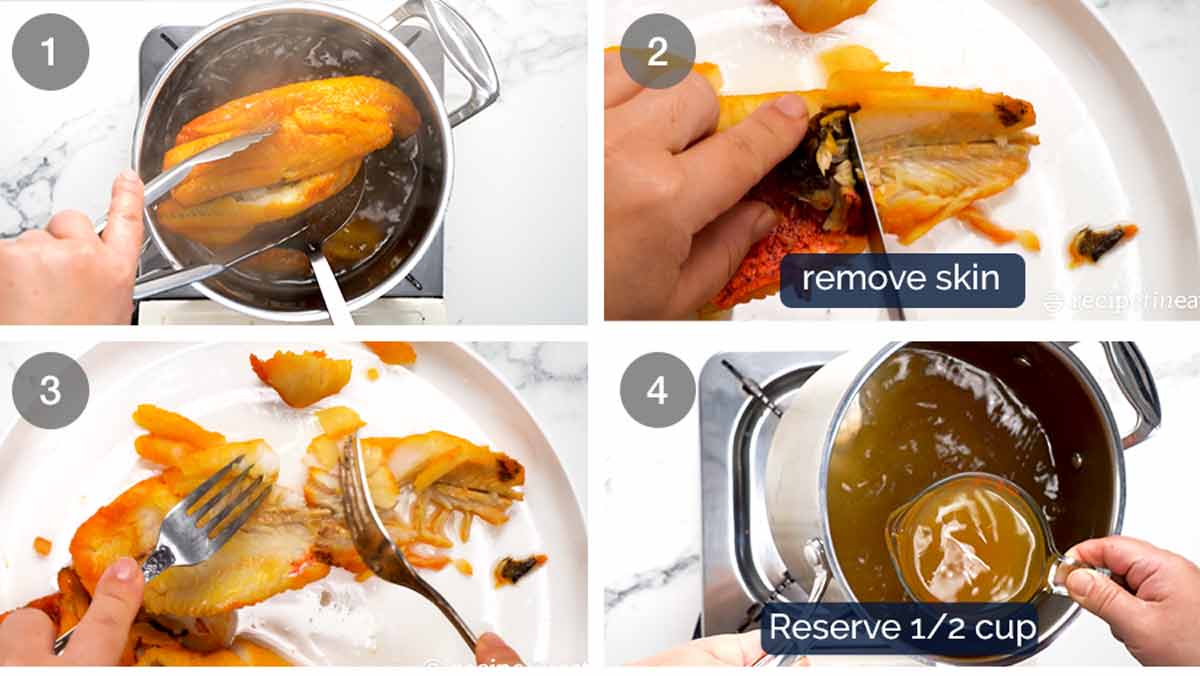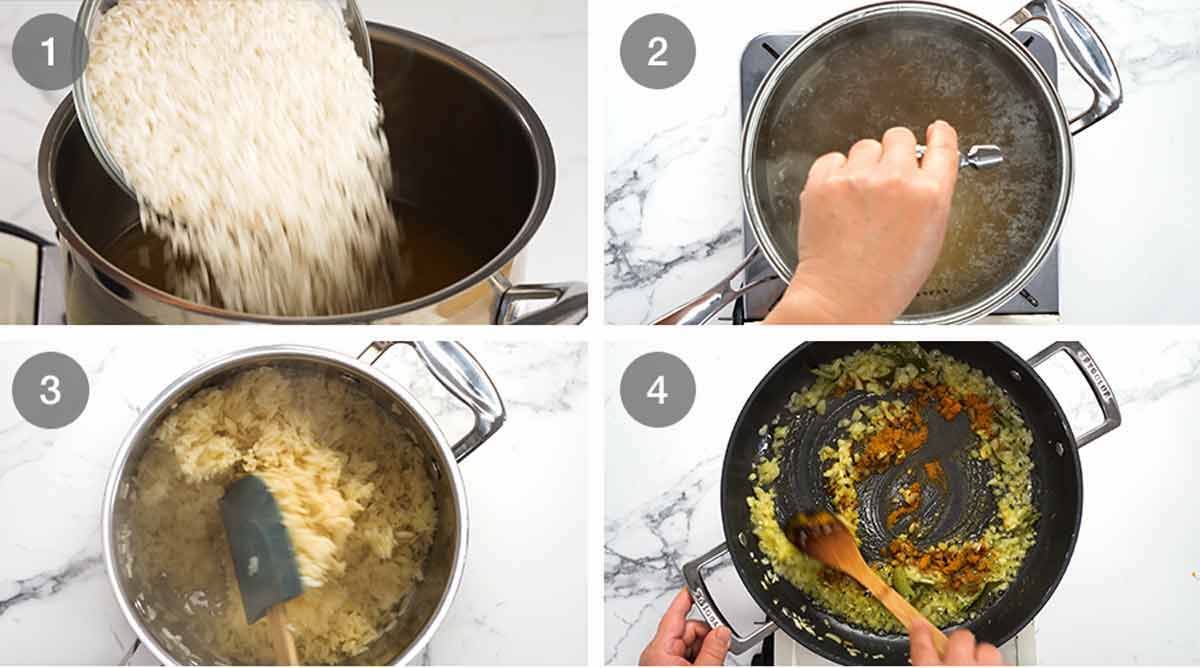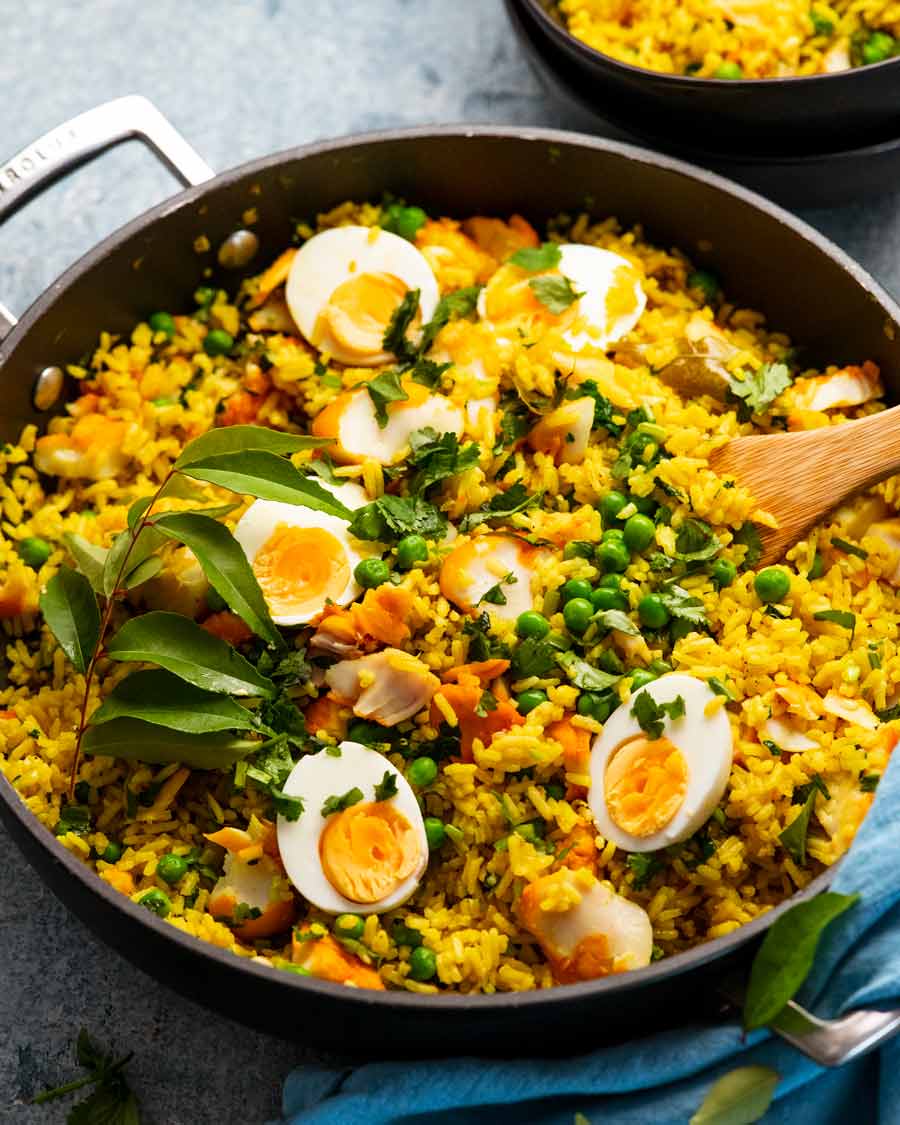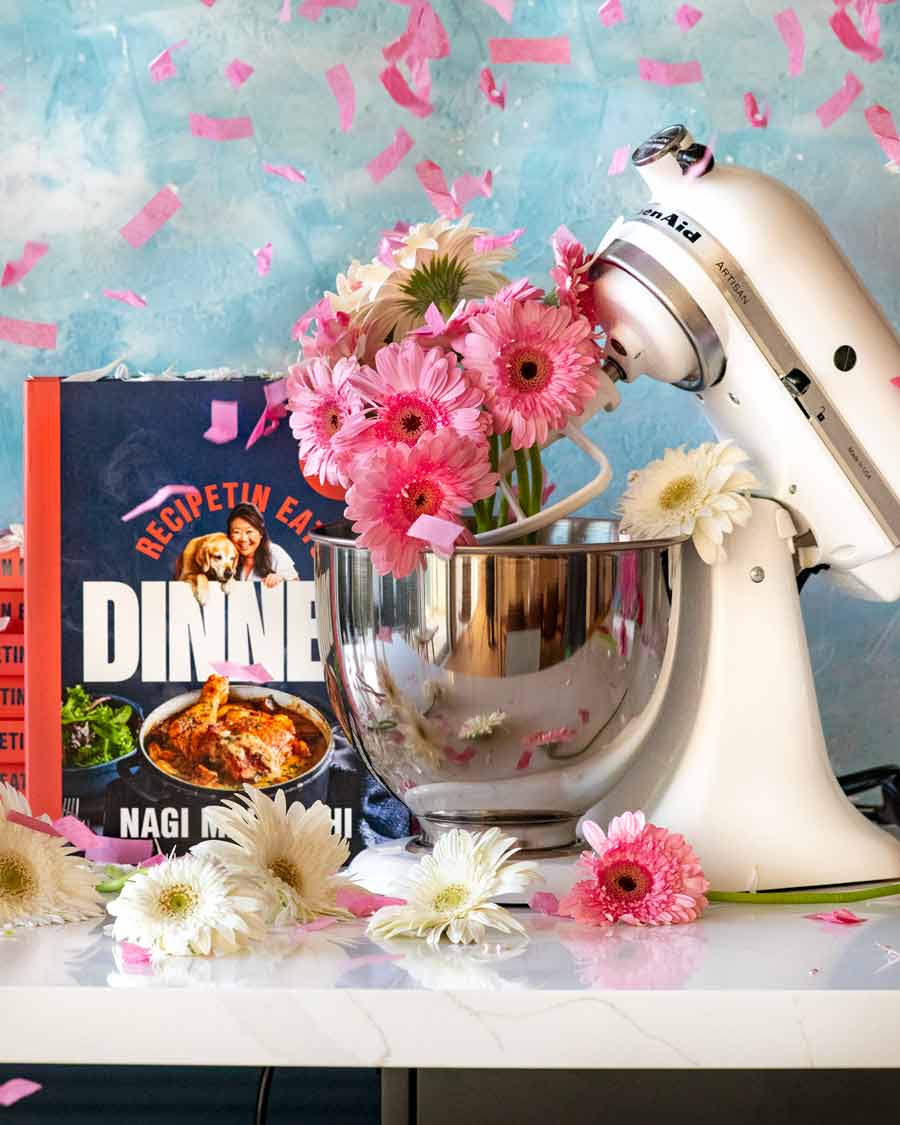Kedgeree – English smoked fish and rice
Is it totally uncouth to call Kedgeree an “English biryani”?? It’s just how I sometimes think of it and I mean it in the most flattering way. It’s a pretty well established fact that I consider biryani to be one of the great rice dishes on this planet. In all seriousness though, Kedgeree is a wonderful example of true fusion food. It brings together rice and spices from the Subcontinent with classic English breakfast foods like boiled eggs and smoked fish. The result is a delicious and unique Anglo-Indian whirlwind of flavours and textures. Traditionally kedgeree was a breakfast dish in Britain but these days it’s served at anytime throughout the day. Straightforward to make, if you’re new to using smoked fish in meals, it’s an excellent way to start!
Ingredients in Kedgeree
I’m sure there are fancy versions of kedgeree out there but we’re making a traditional version today. The hero ingredient is the smoked fish. Smoked haddock is probably the most traditional choice though cod makes an excellent alternative.
Smoked haddock (or cod) – Smoked haddock is a preserved fish fillet product sold at grocery stores at the seafood counter, deli or packed in the fridge section. Oh, also fish mongers of course! It offers an especially economical way to use fish in a meal because smoked haddock/cod is firstly much cheaper than most fresh fish, only about $15/kg here in Australia compared to, say, raw snapper fillets which are around $50/kg. Being packed with flavour, a little also goes a long way.What exactly is smoked haddock? Smoked haddock is fresh haddock (a northern European cod) that’s been brined (ie. infused with salt) then cold smoked to infuse it with a lovely smokey flavour. When haddock is naturally smoked, it is a pale yellow-brown colour. Commercial produced smoked haddock tends to lack colour so is often dyed an orange colour to make it look more like the “real thing”. The fish is poached and then flaked into chunks. We use the flavoured poaching liquid to then cook the rice. Boiled eggs (9 minute eggs using my boiled eggs recipe) – Traditional addition along with smoked fish. Eggs also stretch the fish by adding further protein. Peas – For pops of freshness, colour and introduce some good vegetable matter into our rice dish. Coriander/cilantro – For stirring through and garnish.
Rice and curried butter
The thing that makes Kedgeree special is the spiced butter! What exactly is smoked haddock? Smoked haddock is fresh haddock (a northern European cod) that’s been brined (ie. infused with salt) then cold smoked to infuse it with a lovely smokey flavour. When haddock is naturally smoked, it is a pale yellow-brown colour. Commercial produced smoked haddock tends to lack colour so is often dyed an orange colour to make it look more like the “real thing”. The fish is poached and then flaked into chunks. We use the flavoured poaching liquid to then cook the rice.
Rice – Carries the bulk of the dish! Long grain or basmati rice is best for this dish, for nice long-shaped rice grains and the desired fluffy texture. Medium grain and short grain (sushi) rice will work too though the rice is a little sticker, as is the nature of the rice. Recipe is not suitable for risotto rice, paella rice, brown rice, wild rice, quinoa or faux rice (cauliflower rice etc). Spices: Curry powder and turmeric – You can really use any curry powder here though traditionally used is an English / Western curry powder (as opposed to authentic Indian or Asian curry powder mix). It’s not spicy (unless you opt for the HOT type!), it’s a mix of warm spices including cumin, coriander, clove and turmeric. I use Clives of India and Keens.We add a little extra turmeric to brighten the dish’s colour, otherwise the rice can look a little brown. Curry leaves and cardamom – Additional nods to the Indian heritage of this dish. Curry leaves for fragrance and because it looks attractive, while cardamom for its unique perfume and flavour. However both are optional!Curry leaves – A magnificent ingredient used in Indian/Sri Lankan cooking! Fairly widely available these days in grocery stores in Australia (Coles, woolies, Harris farms), leftovers freeze 100% perfectly. Use in Vindaloo, Dal, South Indian eggplant curry and Samosa Pie. Also easy to grow (I have a plant says the plant-killer, smugly) (PS. curry plants are indestructible) Butter – For sauteing and rich flavour. Onion and garlic – Usual base flavourings. Chicken stock – Cooking the rice in the chicken stock flavoured with the fish imparts a deliciously savoury taste to the rice that’s a step up the flavour ladder from plain water.Why not fish stock? Because mass produced store bought fish stock is not very nice! However if you have fresh fish stock and prefer a more seafood-y tasting biryani, go for it!
How to make Kedgeree
Kedgeree is made by poaching the fish, then cooking the rice in the poaching liquid. The rice is then tossed in a flavourful curried butter before tossing the fish back in and finishing with boiled eggs. Recipe is not suitable for risotto rice, paella rice, brown rice, wild rice, quinoa or faux rice (cauliflower rice etc). We add a little extra turmeric to brighten the dish’s colour, otherwise the rice can look a little brown. Curry leaves – A magnificent ingredient used in Indian/Sri Lankan cooking! Fairly widely available these days in grocery stores in Australia (Coles, woolies, Harris farms), leftovers freeze 100% perfectly. Use in Vindaloo, Dal, South Indian eggplant curry and Samosa Pie. Also easy to grow (I have a plant says the plant-killer, smugly) (PS. curry plants are indestructible) Why not fish stock? Because mass produced store bought fish stock is not very nice! However if you have fresh fish stock and prefer a more seafood-y tasting biryani, go for it!
Cooking the smoked fish
Cold smoked fish (other than salmon or other sashimi grade fish) needs to be cooked before eating. For Kedgeree, the fish is gently poached in stock which is then used to cook the rice. Flavour retention to the max!
Cook rice
Fish done. Now we cook the rice in the flavoured poaching liquid and make a cured butter to toss the rice in. You know this is going to be good! To serve, just spoon into bowls and eat as is. There’s no need for sauce – the rice is nice and moist, and there’s certainly no need for extra flavour! It will keep for a few days in the fridge but it’s best freshly made as rice tends to dry out in the fridge overnight. Reheating is best done in the microwave with a sprinkle of water to make the rice nice and steamy again. If you try this, tell me if you agree with my description of it as an English biryani!!! 🙂 – Nagi x
Watch how to make it
Life of Dozer
When I took the photo for a big Mother’s Day KitchenAid giveaway currently happening on Instagram…. …..there’s just no way this wasn’t going to happen!! 😂
